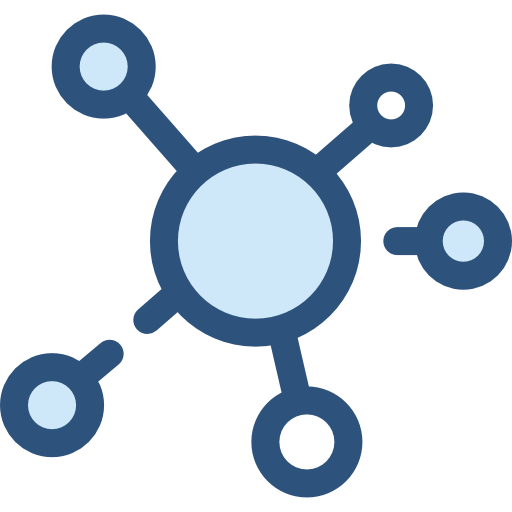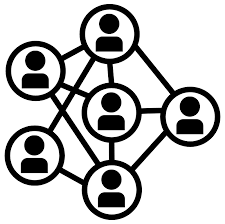At this level, the focus is on expanding into new markets, driving innovation, and establishing a strong corporate culture.
For a scale-out business, it is important to have a clear vision and strategy for growth. The organization should focus on expanding into new markets or product lines, potentially through mergers and acquisitions. At this level, effective leadership, cross-functional collaboration, and communication are essential for success.
Model Fit
MAMOS IV is tailored for companies which have to scale different parts of the organizations for different objectives, offers, and concerns, but that still need to guarantee an overall coherence of the user experience. Mergers and acquisitions need can also increase.

Scale out
The main focus is to expand the business into different spaces at speed.

Platform ecosystem
The driver is to create decouple ecosystems of business platforms.

Large organization
Usually between $200m-1b of annual revenue with 150-500 FTEs.
QE Blueprint
MAMOS IV structures the software system into business and technology platforms to provide the necessary decoupling to iterate in different parts on the business with quality at speed.
MAMOS
Methods
“Replicate”
That system focuses on making the software production process replicable at scale among multiple teams.
Methodologies are focusing at allowing a progressive decentralizing with controlled mechanisms to keep quality in.
- OKR
- Decentralized AR
- Customer Journeys Mapping
- Event governance
- DDD at scale
- SRE
- Error-budget
- Debt governance
Guiding Principles
- Create ecosystems
- Orchestrate platforms
- High cohesion, low coupling
- Keep minimal synchronization
- Ensure customer journeys
- Contain entropy
Key Changes
- Focus switch to platform
- Central coordination reduces
- Local optimizations needed
- Points of decoupling to set
- Dependencies to reduce more
- Must have quality checks
- Required debt reduction
Key Choices
- Global and local processes
- Rituals to keep global visibility
- Autonomy per domain teams
- Alignment mechanisms
- Detection of non-conformities
Key Actions
- Setup governance to align
- Establish global rituals
- Define local rituals
- Give progressive autonomy
- Decentralize central processes
- Processes to contain entropy
ARCHITECTURE
“Industrialize”
The organization expanding in multiple directions have to balance global scale and local flexibility to keep iterating at speed.
The architecture focuses on structuring platforms aligned on business goals to balance the multiple objectives and keep the capability to accelerate mergers and acquisitions.
- Event-led
- Miniservices
- Distributed Cloud
- Async API
- Streaming Patterns
- Continuous Testing
- Operations Automation
Guiding Principles
- Support business distribution
- Create decoupled ecosystems
- Bounded-contexts isolation
- Distribute through event
- Data ownership per ecosystem
- Contain and reduce tech debt
Key Changes
- Business growth diverse
- Composition of platforms
- Bounded-context more clear
- Capabilities can be isolated
- Events bring more flexibility
- Data consolidation is harder
- Multiple technologies in use
- Tech debt per ecosystem
Key Choices
- Business boundaries definition
- Platforms structure
- Bounded-contexts scope
- Priority scope to isolate
- Patterns for data management
- Product scope to externalize
- Technologies per perimeter
- Global and local standards
Key Actions
- Align platform scope
- Define bounded-contexts
- Clarify migration patterns
- Organize data management
- Assess externalization
- Update technology radar
- Invest more in refactoring
- Keep industrializing
MANAGEMENT
“Maintain Alignment”
The key challenge of an organization growing in multiple areas at the same time is to keep an alignment on what’s needed.
While local flexibility can be good, it can damage the end-to-end experience and operations, requiring management to keep teams on the big picture.
- Leadership teams
- Influencers roles
- Global vision cascading
- Prioritization alignment
- Performance management
Guiding Principles
- Staff and coach directors
- Invest in senior profiles
- Animate global vision cascade
- Set prioritization mechanism
- Performance management
Key Changes
- Multiple leaderships levels
- Influences role importance
- Clear leaders needed per area
- Collaboration is more complex
- Team performance will vary
- Local differences more visible
- Key alignment points needed
Key Choices
- Leadership team members
- Platform unit leaders
- Key areas to invest in
- Global vs. local processes
- Performance objectives
- Key rituals organization
Key Actions
- Staff leadership layers
- Create sharing moments
- Give growth opportunities
- Use examples for culture
- Objectives review per scope
- Create assessment rituals
- Ensure proactive measures
ORGANIZATION
“Concentrate Expertises”
The growth of the organization requires to consolidates different expertises to keep delivering adapting with speed.
The organizational design must provides the maximum of focus to platform teams with the minimal of alignment points between teams.
- Exective team
- Platform teams
- Center of Excellence (CoE)
- Culture Feedback
- Responsibility model
Guiding Principles
- Align teams of teams
- Create excellence center
- Introduce senior profile
- Create sub-leaderships teams
- Ensure cultural feedback
- Deploy internal self-service
Key Changes
- Teams become ecosystems
- More black-box between teams
- Harder to keep consistency
- Culture have local variations
- Regular teams rotation
- Stakeholders more important
- More evolution opportunities
- Priorities harder to manage
Key Choices
- Keep or change the CTO
- Promote, hire, or dismiss
- Projects to focus and cancel
- Functions to keep central
- Autonomy to value-stream
- Performance management
Key Actions
- Ensure leadership level overall
- Continuously staff teams
- Central and local mechanisms
- Implement responsibility model
- Prioritization management
- Attraction and retention
- Career paths and evolution
- Address organizational debt
SKILLS
“Build-up Internal Expertises”
The team requires the necessary skills and knowledge to execute on the vision and build a successful product.
The key focus on the core skills that are critical and unique for the success of the product is essential to continuously improve and refine these skills throughout the company’s growth.
- Hire key core talents
- Externalize non-core
- Flexible partners
- Remote only or hybrid
- Remuneration packages
- Work policies
Guiding Principles
- Acquire core expertise
- Reinforce level of leadership
- Ensure processes performance
- Increase external visibility
- Develop internal network
Key Changes
- Multiple expertise required
- Larger variety of positions
- Center of excellence necessary
- Specific areas fully external
- Skills sharing across areas
Key Choices
- Core expertises
- Part of skills to externalize
- Priority CoE
- Most important area to invest
- Internal sharing mechanisms
Key Actions
- Reassess expertises to invest
- Define scope to externalize
- Clarify prioritary CoE
- Create CoE with objectives
- Set investments per skills
- Scale sharing mechanisms